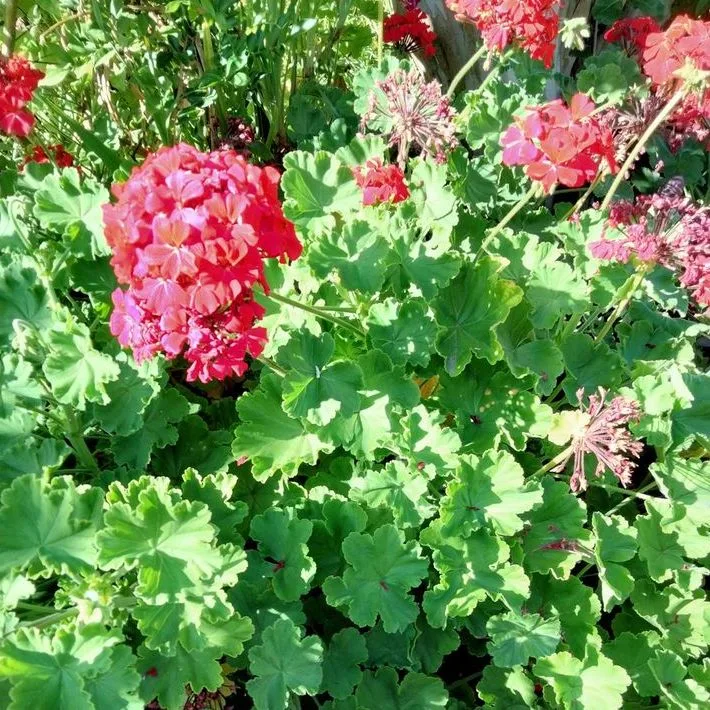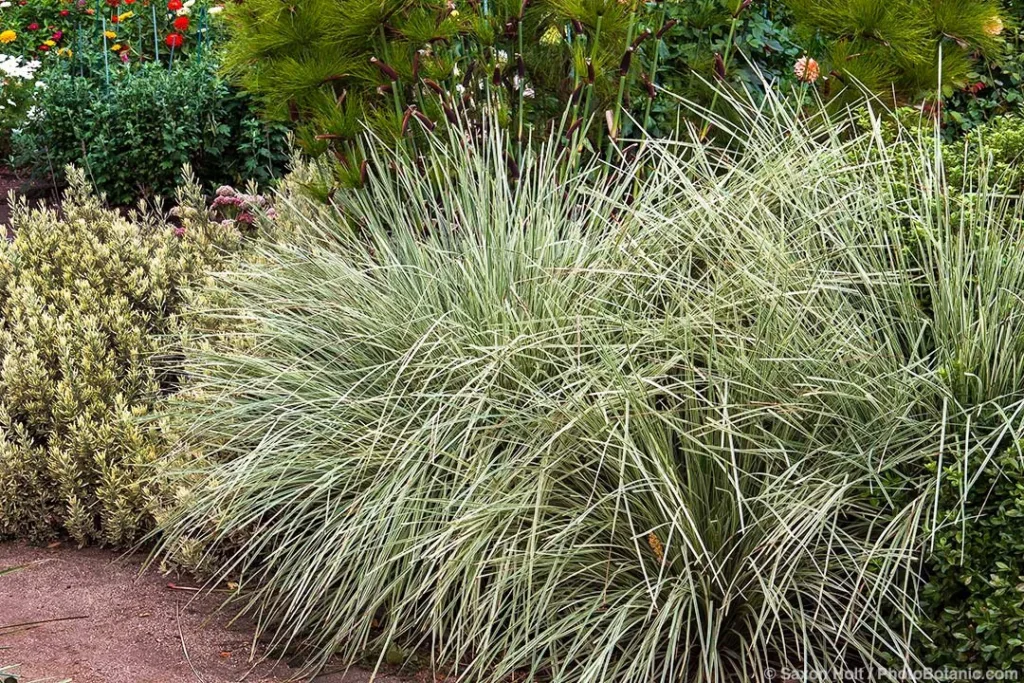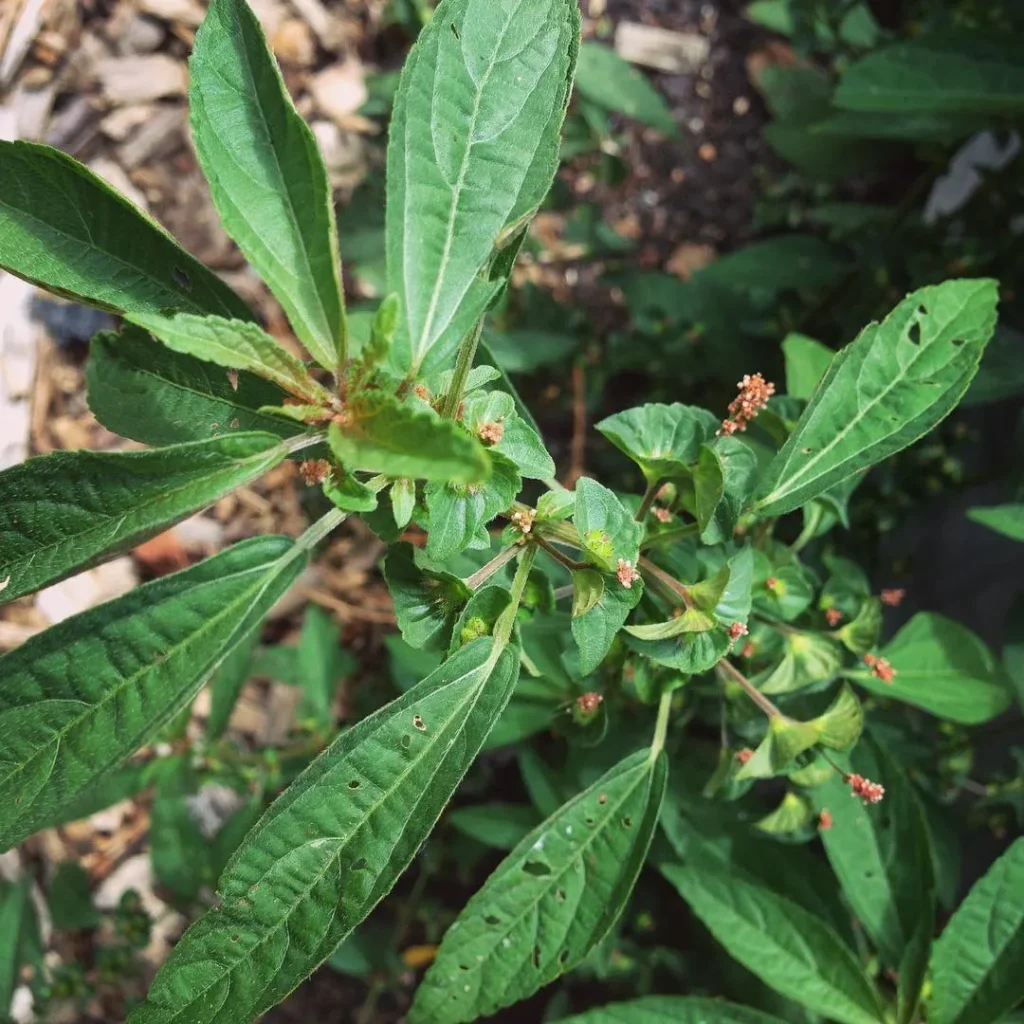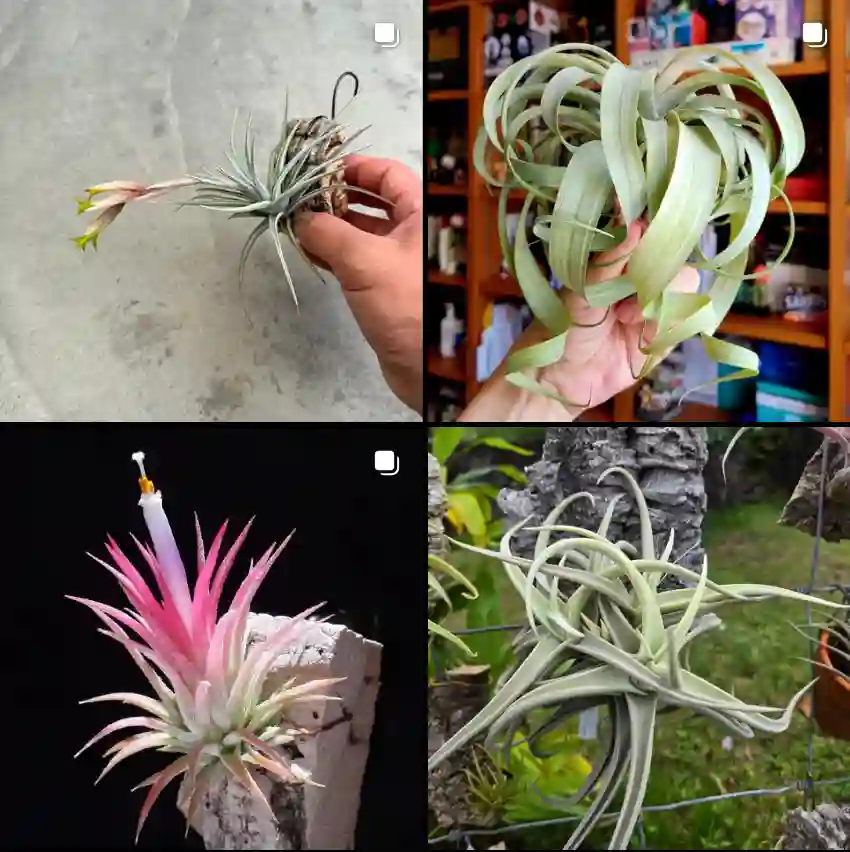Apocynaceae: A Plant Family I Admire
I, Ferb Vu, am an admirer of the diverse plant kingdom, and among its myriad families, the Apocynaceae holds a special fascination for me. The Apocynaceae family is a remarkable group of flowering plants that captivates with its sheer diversity, fascinating characteristics, and economic and ecological significance. Let’s explore this captivating family, delve into its botanical wonders, and highlight its importance.
Botanical Wonders
The Apocynaceae family boasts a vast array of plant forms, ranging from graceful vines and shrubs to towering trees. The family’s defining characteristic is the presence of milky sap or latex, a substance known for its medicinal and industrial uses. The leaves are typically simple, arranged oppositely or in whorls, often with a glossy sheen. The flowers, which are typically showy and fragrant, display a wide range of colors and shapes. The family’s fruit diversity is equally remarkable, encompassing follicles, berries, capsules, and drupes.
Genera Galore
The Apocynaceae family encompasses 387 genera, a testament to its remarkable diversity.
- Allamanda: Trumpet-shaped, vibrant flowers, often used as ornamentals. – 16 Species in Genus Allamanda
- Asclepias: Milkweeds, known for their role in supporting monarch butterfly populations. – 209 Species in Genus Asclepias
- Catharanthus: Madagascar periwinkle, the source of crucial anti-cancer compounds. – 9 Species in Genus Catharanthus
- Hoya: Wax plants, prized for their thick, waxy leaves and fragrant flowers. – 566 Species in Genus Hoya
- Mandevilla: Showy vines with large, trumpet-shaped flowers. – 182 Species in Genus Mandevilla
- Nerium: Oleander, a beautiful but poisonous ornamental shrub. – Nerium Oleander in Genus Nerium
- Plumeria: Frangipani, beloved for its fragrant flowers. – 19 Species in Genus Plumeria
- Rauvolfia: Source of reserpine, a compound used to treat hypertension.
- Strophanthus: Source of cardiac glycosides used to treat heart conditions. – 39 Species in Genus Strophanthus
- Thevetia: Yellow oleander, a poisonous ornamental shrub.
- Vinca: Periwinkles, groundcovers with delicate flowers. – 7 Species in Genus Vinca
- Acokanthera G.Don
- Adenium Roem. & Schult. – 6 Species in Genus Adenium
- Aganosma (Blume) G.Don
- Alafia Thouars
- Allomarkgrafia Woodson
- Allowoodsonia Markgr.
- Alstonia R.Br.
- Alyxia R.Br.
- Amalocalyx Pierre
- Ambelania Aubl.
- Amphineurion (A.DC.) Pichon
- Amsonia Walter – 17 Species in Genus Amsonia
- Ancylobothrys Pierre
- Anechites Griseb.
- Anemotrochus Mangelsdorff, Meve & Liede
- Angadenia Miers
- Anisopus N.E.Br.
- Anisotoma Fenzl
- Anodendron A.DC.
- Apocynum L.
- Apteranthes J.C.Mikan
- Araujia Brot.
- Artia Guillaumin
- Asketanthera Woodson
- Aspidoglossum E.Mey.
- Aspidonepsis Nicholas & Goyder
- Aspidosperma Mart. & Zucc.
- Astephanus R.Br.
- Asterostemma Decne.
- Atherandra Decne.
- Atrostemma Morillo
- Australluma Plowes
- Austrochthamalia Morillo & Fontella
- Baharuia D.J.Middleton
- Bahiella J.F.Morales
- Baissea A.DC.
- Ballyanthus Bruyns
- Barjonia Decne.
- Baroniella Costantin & Gallaud
- Baseonema Schltr. & Rendle
- Batesanthus N.E.Br.
- Baynesia Bruyns
- Beaumontia Wall.
- Blepharodon Decne.
- Boucerosia Wight & Arn.
- Bousigonia Pierre
- Brargentina Morillo & H.A.Keller
- Bruceholstia Morillo
- Buckollia Venter & R.L.Verh.
- Caa H.A.Keller & Liede
- Calciphila Liede & Meve
- Callichilia Stapf
- Calocrater K.Schum.
- Calotropis R.Br. – 3 Species in Genus Calotropis
- Calyptranthera Klack.
- Cameraria L.
- Campestigma Pierre ex Costantin
- Camptocarpus Decne.
- Caralluma R.Br. – 31 Species in Genus Caralluma
- Carissa L. – 12 Species in Genus Carissa
- Carruthersia Seem.
- Carvalhoa K.Schum.
- Cascabela Raf.
- Caudanthera Plowes
- Cerbera L. – 6 Species in Genus Cerbera
- Cerberiopsis Vieill. ex Pancher & Sebert
- Ceropegia L. – 461 Species in Genus Ceropegia
- Chamaeclitandra (Stapf) Pichon
- Chilocarpus Blume
- Chlorocyathus Oliv.
- Chloropetalum Morillo
- Chonemorpha G.Don
- Chthamalia Decne.
- Cibirhiza Bruyns
- Cionura Griseb.
- Cleghornia Wight
- Clitandra Benth.
- Condylocarpon Desf.
- Conomitra Fenzl
- Cordylogyne E.Mey.
- Cosmostigma Wight
- Couma Aubl.
- Craspidospermum Bojer ex A.DC.
- Crioceras Pierre
- Cristobalia Morillo, S.A.Cáceres & H.A.Keller
- Cryptolepis R.Br. – 34 Species in Genus Cryptolepis
- Cryptostegia R.Br.
- Cycladenia Benth.
- Cyclocotyla Stapf
- Cylindropsis Pierre
- Cynanchum L.
- Dalzielia Turrill
- Decalepis Wight & Arn.
- Decanema Decne.
- Desmidorchis Ehrenb.
- Dewevrella De Wild.
- Dictyanthus Decne.
- Dictyophleba Pierre
- Diplolepis R.Br.
- Diplorhynchus Welw. ex Ficalho & Hiern
- Dischidanthus Tsiang
- Dischidia R.Br. – 128 Species in Genus Dischidia
- Ditassa R.Br.
- Dolichopetalum Tsiang
- Duvalia Haw.
- Duvaliandra M.G.Gilbert
- × Duvaliaranthus Bruyns
- Dyera Hook.f.
- Echidnopsis Hook.f.
- Echites P.Browne
- Ectadium E.Mey.
- Ecua D.J.Middleton
- Edithcolea N.E.Br.
- Elytropus Müll.Arg.
- Emicocarpus K.Schum. & Schltr.
- Emplectanthus N.E.Br.
- Ephippiocarpa Markgr.
- Epigynum Wight
- Epistemma D.V.Field & J.B.Hall
- Eucorymbia Stapf
- Eustegia R.Br.
- Fanninia Harv.
- Farquharia Stapf
- Finlaysonia Wall.
- Fischeria DC.
- Fockea Endl.
- Forsteronia G.Mey.
- Funastrum E.Fourn.
- Funtumia Stapf
- Galactophora Woodson
- Geissospermum Allemão
- Genianthus Hook.f.
- Glossostelma Schltr.
- Gomphocarpus R.Br.
- Gongreos Rodda, Liede & Meve
- Gongronema (Endl.) Decne.
- Gongronemopsis S.Reuss, Liede & Meve
- Gonioma E.Mey.
- Goniostemma Wight
- Gonolobus Michx.
- Graciemoriana Morillo
- Gymnanthera R.Br.
- Gymnema R.Br. – 52 Species in Genus Gymnema
- Gymnemopsis Costantin
- Gyrostelma E.Fourn.
- Hancornia Gomes
- Haplophyton A.DC.
- Harmandiella Costantin
- Hemidesmus R.Br.
- Hemipogon Decne.
- Heterostemma Wight & Arn.
- Heynella Backer
- Himatanthus Willd. ex Schult.
- Holarrhena R.Br.
- Hoodia Sweet ex Decne. – 13 Species in Genus Hoodia
- × Hoodiapelia G.D.Rowley
- × Hoodiorbea G.D.Rowley
- × Hoodiotriche G.D.Rowley
- Huernia R.Br. – 78 Species in Genus Huernia
- Hunteria Roxb.
- Hylaea J.F.Morales
- Hypolobus E.Fourn.
- Ibatia Decne.
- Ichnocarpus R.Br.
- Ischnolepis Jum. & H.Perrier
- Isonema R.Br.
- Ixodonerium Pit.
- Jasminanthes Blume
- Jobinia E.Fourn.
- Kamettia Kostel.
- Kanahia R.Br.
- Kerbera E.Fourn.
- Kibatalia G.Don
- Kopsia Blume
- Lachnostoma Kunth
- Lacmellea H.Karst.
- Landolphia P.Beauv.
- Larryleachia Plowes
- Laubertia A.DC.
- Lavrania Plowes
- Laxoplumeria Markgr.
- Leichhardtia R.Br.
- Lepinia Decne.
- Lepiniopsis Valeton
- Leptadenia R.Br.
- Leuconotis Jack
- Lygisma Hook.f.
- Maclaudia Venter & R.L.Verh.
- Macoubea Aubl.
- Macropharynx Rusby
- Macroscepis Kunth
- Mahawoa Schltr.
- Malouetia A.DC.
- Manothrix Miers
- Margaretta Oliv.
- Marsdenia R.Br.
- Mascarenhasia A.DC.
- Matelea Aubl.
- Melodinus J.R.Forst. & G.Forst.
- Mesechites Müll.Arg.
- Metastelma R.Br.
- Meveampelos Morillo
- Micrechites Miq.
- Microloma R.Br.
- Microplumeria Baill.
- Microstelma Baill. ex Morillo
- Minaria T.U.P.Konno & Rapini
- Miraglossum Kupicha
- Molongum Pichon
- Mondia Skeels
- Monolluma Plowes
- Monsanima Liede & Meve
- Morilloa Fontella, Goes & S.A.Cáceres
- Mortoniella Woodson
- Motandra A.DC.
- Mucoa Zarucchi
- Myriopteron Griff.
- Nautonia Decne.
- Neobracea Britton
- Neocouma Pierre
- Neoschumannia Schltr.
- Nephradenia Decne.
- Notechidnopsis Lavranos & Bleck
- Ochrosia Juss.
- Odontadenia Benth.
- Odontostephana Alexander
- Oncinema Arn.
- Oncinotis Benth.
- Ophionella Bruyns
- Orbea Haw. – 60 Species in Genus Orbea
- × Orbelia G.D.Rowley
- Oreosparte Schltr.
- Orinoquia Morillo
- Orthopichonia H.Huber
- Orthosia Decne.
- Oxypetalum R.Br.
- Oxystelma R.Br.
- Pachycarpus E.Mey.
- Pachypodium Lindl. – 23 Species in Genus Pachypodium
- Pacouria Aubl.
- Papuahoya Rodda & Simonsson
- Papuechites Markgr.
- Parahancornia Ducke
- Parapodium E.Mey.
- Parepigynum Tsiang & P.T.Li
- Parsonsia R.Br.
- Pattalias S.Watson
- Pectinaria Haw.
- Pentacyphus Schltr.
- Pentalinon Voigt
- Pentasacme Wall. ex Wight
- Pentatropis R.Br. ex Wight & Arn.
- Pentopetia Decne.
- Peplonia Decne.
- Pergularia L.
- Periglossum Decne.
- Periploca Tourn. ex L.
- Peruviasclepias Morillo
- Pervillaea Decne.
- Petalostelma E.Fourn.
- Petchia Livera
- Phaeostemma E.Fourn.
- Pherotrichis Decne.
- Philibertia Kunth
- Phyllanthera Blume
- Piaranthus R.Br.
- Picralima Pierre
- Pinochia M.E.Endress & B.F.Hansen
- Plectaneia Thouars
- Pleiocarpa Benth.
- Pleioceras Baill.
- Polystemma Decne.
- Pottsia Hook. & Arn.
- Prestonia R.Br.
- Pruskortizia Morillo
- Pseudolachnostoma Morillo
- Pseudolithos P.R.O.Bally
- Pteralyxia K.Schum.
- Ptycanthera Decne.
- Pycnobotrya Benth.
- Pycnorhachis Benth.
- Quaqua N.E.Br.
- Raphionacme Harv.
- Rhabdadenia Müll.Arg.
- Rhazya Decne.
- Rhigospira Miers
- Rhodocalyx Müll.Arg.
- Rhyssolobium E.Mey.
- Rhytidocaulon P.R.O.Bally
- Rhytidostemma Morillo
- Richtersveldia Meve & Liede
- Riocreuxia Decne.
- Riparoampelos Morillo
- Rojasia Malme
- Rotundanthus Morillo
- Ruehssia H.Karst.
- Saba (Pichon) Pichon – 3 Species in Genus Saba
- Sacleuxia Baill.
- Sarcolobus R.Br.
- Sarcorrhiza Bullock
- Schistonema Schltr.
- Schizoglossum E.Mey.
- Schizostephanus Hochst. ex Benth. & Hook.f.
- Schizozygia Baill.
- Schlechterella K.Schum.
- Schubertia Mart.
- Scyphostelma Baill.
- Secamone R.Br.
- Secamonopsis Jum.
- Secondatia A.DC.
- Sicyocarpus Bojer
- Sindechites Oliv.
- Sinomarsdenia P.T.Li & J.J.Chen
- Sisyranthus E.Mey.
- Skytanthus Meyen
- Socotrella Bruyns & A.G.Mill.
- Solenostemma Hayne
- Spirolobium Baill.
- Spongiosperma Zarucchi
- × Staparesia G.D.Rowley
- Stapelia L. – 32 Species in Genus Stapelia
- Stapelianthus Choux ex A.C.White & B.Sloane
- Stapeliopsis Pillans
- × Stapvalia D.M.Cumming
- Stathmostelma K.Schum.
- Stelmagonum Baill.
- Stenostelma Schltr.
- Stephanostegia Baill.
- Stephanostema K.Schum.
- Stephanotis Thouars – 15 Species in Genus Stephanotis
- Stigmatorhynchus Schltr.
- Stipecoma Müll.Arg.
- Stomatostemma N.E.Br.
- Strempeliopsis Benth.
- Streptocaulon Wight & Arn.
- Streptoechites D.J.Middleton & Livsh.
- Suberogerens Morillo
- Tabernaemontana Plum. ex L. – 126 Species in Genus Tabernaemontana
- Tabernanthe Baill.
- Tacazzea Decne.
- Talayotea L.O.Alvarado
- Tassadia Decne.
- Tavaresia Welw.
- Telectadium Baill.
- Telosma Coville ex N.E.Br.
- Temnadenia Miers
- Tetragonocarpus Hassk.
- Thenardia Kunth
- Thoreauea J.K.Williams
- Thyrsanthella (Baill.) Pichon
- Tintinnabularia Woodson
- Topea H.A.Keller
- Toxocarpus Wight & Arn.
- Trachelospermum Lem.
- Tressensia H.A.Keller
- Treutlera Hook.f.
- Trichosandra Decne.
- × Tridentapelia G.D.Rowley
- Tridentea Haw.
- Tromotriche Haw.
- Tweedia Hook. & Arn.
- Tylodontia Griseb.
- Urceola Roxb.
- Vahadenia Stapf
- Vailia Rusby
- Vallaris Burm.f.
- Vallesia Ruiz & Pav.
- Vincetoxicum Wolf
- Voacanga Thouars
- Vulcanoa Morillo
- White-sloanea Chiov.
- Willughbeia Roxb.
- Woodia Schltr.
- Wrightia R.Br.
- Xysmalobium R.Br.
- Zygostelma Benth.
Economic and Ecological Importance
The Apocynaceae family plays a vital role in both economic and ecological spheres.
- Medicinal Marvels: Many Apocynaceae species contain a wealth of bioactive compounds with medicinal properties. Vinca alkaloids, derived from Catharanthus roseus, have revolutionized cancer treatment. Rauvolfia serpentina, a source of reserpine, has been instrumental in managing hypertension. Cardiac glycosides extracted from Strophanthus species have been used to treat heart conditions for centuries.
- Ornamental Delights: Numerous Apocynaceae members grace gardens and landscapes with their beauty. Allamanda, Mandevilla, and Plumeria are renowned for their vibrant flowers, while Hoya captivates with its unique foliage.
- Ecological Champions: The Apocynaceae family supports a wide range of pollinators, including bees, butterflies, and birds, drawn to its nectar-rich flowers. Asclepias species serve as critical host plants for monarch butterfly larvae. The family’s diverse fruit types provide sustenance for various animals, contributing to ecosystem health.
- Industrial Applications: The latex or milky sap found in many Apocynaceae members has various industrial applications. It is used in the production of rubber, chewing gum, adhesives, and even pharmaceuticals.
My Fascination
My admiration for the Apocynaceae family stems from its diverse botanical wonders, encompassing various plant forms, fascinating flowers, and intriguing fruits. The family’s economic and ecological significance further strengthens my appreciation. From life-saving medicines to vibrant ornamentals, the Apocynaceae family offers a treasure trove of benefits. Moreover, its role in supporting pollinators and other wildlife underscores its vital ecological importance.
As I continue to explore the botanical world, the Apocynaceae family remains a source of endless fascination and inspiration. Its diversity, beauty, and significance serve as a constant reminder of the wonders of the plant kingdom and the intricate connections that sustain life on Earth. Whether I encounter a delicate periwinkle or a majestic plumeria, I am always filled with a sense of awe and gratitude for the Apocynaceae family and the botanical riches it bestows upon us.
If i die, water my plants!



